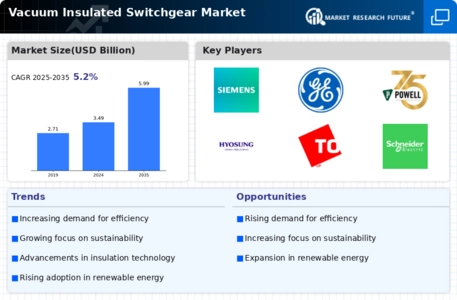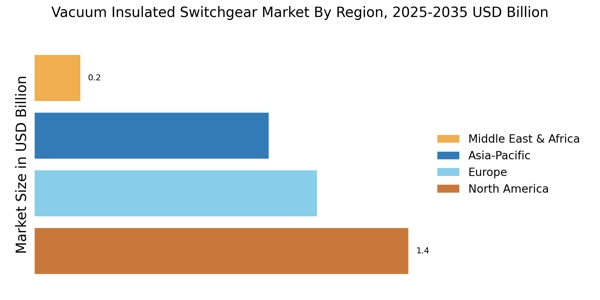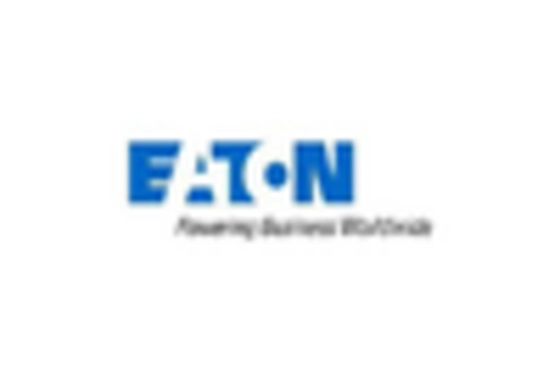Rising Demand for Renewable Energy
The increasing emphasis on renewable energy sources, such as solar and wind, is driving the Vacuum Insulated Switchgear Market. As countries strive to meet their energy needs sustainably, the integration of renewable energy into existing grids necessitates advanced switchgear solutions. Vacuum insulated switchgear offers enhanced reliability and efficiency, making it a preferred choice for renewable energy applications. According to recent data, The Vacuum Insulated Switchgear Market is projected to grow significantly, with investments in solar and wind energy expected to reach trillions of dollars by 2030. This growth is likely to propel the demand for vacuum insulated switchgear, as utilities and energy providers seek to modernize their infrastructure to accommodate the influx of renewable energy sources.
Increased Focus on Grid Modernization
The ongoing efforts to modernize electrical grids are significantly influencing the Vacuum Insulated Switchgear Market. Aging infrastructure and the need for improved reliability and efficiency are prompting utilities to invest in advanced switchgear technologies. Vacuum insulated switchgear, known for its compact design and minimal maintenance requirements, is becoming increasingly attractive for grid modernization projects. Recent statistics indicate that investments in grid modernization are expected to exceed hundreds of billions of dollars over the next decade. This trend suggests a robust market opportunity for vacuum insulated switchgear manufacturers, as utilities prioritize upgrading their systems to enhance performance and reduce outages.
Regulatory Support for Energy Efficiency
Regulatory frameworks aimed at promoting energy efficiency are playing a crucial role in shaping the Vacuum Insulated Switchgear Market. Governments worldwide are implementing policies that encourage the adoption of energy-efficient technologies, including advanced switchgear solutions. Vacuum insulated switchgear, with its superior performance and reduced energy losses, aligns well with these regulatory initiatives. Recent reports suggest that energy efficiency regulations are becoming increasingly stringent, compelling utilities and industries to upgrade their equipment. This regulatory push is expected to drive the demand for vacuum insulated switchgear, as organizations seek to comply with energy efficiency standards and reduce their carbon footprint.
Growing Urbanization and Population Density
Urbanization is a key driver of the Vacuum Insulated Switchgear Market, as cities expand and population density increases. The demand for reliable and efficient electrical infrastructure is paramount in urban areas, where the concentration of buildings and facilities necessitates advanced switchgear solutions. Vacuum insulated switchgear provides a space-saving alternative to traditional switchgear, making it ideal for urban environments. Data indicates that urban populations are projected to rise significantly, with more than two-thirds of the world's population expected to live in cities by 2050. This demographic shift is likely to create substantial demand for vacuum insulated switchgear as urban planners and utilities seek to enhance their electrical systems.
Technological Innovations in Switchgear Design
Technological advancements in switchgear design are significantly impacting the Vacuum Insulated Switchgear Market. Innovations such as digital monitoring, automation, and enhanced insulation materials are enhancing the performance and reliability of vacuum insulated switchgear. These advancements not only improve operational efficiency but also reduce maintenance costs, making them attractive to utilities and industries. Market data indicates that the adoption of smart grid technologies is on the rise, with investments in digital infrastructure expected to reach substantial figures in the coming years. This trend suggests that vacuum insulated switchgear, equipped with the latest technological innovations, will be well-positioned to meet the evolving needs of the energy sector.


















Leave a Comment